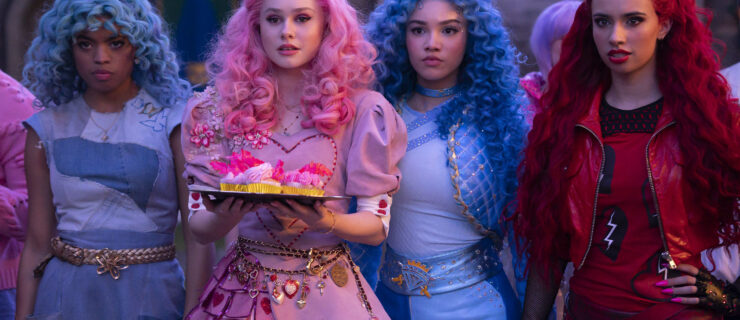How Incorporating Spoken Word into Dance Can Help You Connect with Audiences
Chances are you’ve seen a musical theater performance that made use of actors’ dancing skills to help move along the storyline. Hit Broadway shows like Chicago and 42nd Street employ movement to develop characters and plots. If actors can dance to enhance their performances, then why can’t the opposite be just as effective?
Increasingly, choreographers are pushing the envelope by creating works that use speech. “People have been doing it for a while now, and they’re starting to give themselves permission to really go in further directions of experimentation,” says Tom Pearson, co-founder and co-director of the NYC-based modern company Third Rail Dance.
How do you know whether vocals should be included in your next dance? A rule of thumb is to use words only when they accomplish something that movement alone cannot. Speaking should be an extension of choreography, not a replacement. Think of vocals as the addition of a new and unique layer to your dance, rather than a way to explain what’s happening onstage.
You might have a specific story to tell: Perhaps your dance is inspired by a literary phrase or passage you’d like to share with the audience, or maybe you’re performing a comedy and want to tell a joke. From lyrical performances featuring poetry recitations to hip-hop routines with performers energetically yelling in unison, different dances lend themselves to different vocals. Don’t typecast your style—there’s no genre of dance that should or shouldn’t involve text.
Start Small
Give yourself time in the studio to brainstorm and experiment. Start by considering what mood, scene or emotion can be added through text. Pearson recommends creating character sketches and improvising—vocally and physically—in character. Videotape yourself during this stage so you won’t have to worry about remembering steps and words later. Don’t think you need to come to the first rehearsal with a polished script in your hand.
To avoid oral overload for performers and audiences unfamiliar with spoken words in dance, start with small doses. Branch out from your comfort zone little by little with words and sentences placed sparingly and thoughtfully throughout your piece. Staccato vocals, such as monosyllabic yells, are popular on the competition circuit to accent dances and add energy. However, even short exclamations become irritating when overused: “It’s cool for a second, but when the whole dance is like that, it gets repetitive,” says Joe Loera, former competition judge and founder of KampNYC, a dance and acting workshop. Physical movement should always be the focal point of a dance.
Performance Prep
With text, as with movement, take into account the ages and skills of the dancers. Younger dancers may benefit from vocal cues in songs to help with memory and sequencing, while veteran dancers should be able to use vocals as an extension of the choreography to provide another layer of meaning.
To keep dancers comfortable with speaking onstage, Pearson recommends incorporating acting exercises and vocal warm-ups on the first day of rehearsal; the practice will pay off. Dancers should also learn to train and care for their voices like their bodies, taking time to warm up lungs and vocal cords before every rehearsal.
Seek help outside the dance community. Theater directors, acting coaches, drama teachers from your local high school and dance teachers with backgrounds in musical theater can provide fresh perspectives and help teach dancers how to deliver lines.
Final Touches
As you revise, continue calling on nondancers for assistance: Look to writers for advice or have actors critique scripts. Bring in thematic experts to check accuracy. (For example, if your text involves sports analogies, ask a little league coach to make sure they’re accurate.) Invite test audiences of people you trust and gauge their responses. “With text and comedy, you have to do your check-ins early on, because if you think you have a great joke and it falls flat, it needs to go,” says Pearson. As you begin to perfect your piece, don’t cling to the script when better options crop up.
After you’ve written, rehearsed and rewritten, take a step back. “Time away is invaluable. When you come back to it, you get to see it [with a fresh eye],” says Rebecca Lazier, artistic director of NYC’s Terrain. After giving your routine—and yourself—a rest period, you can revisit it with renewed objectivity, altering words and movement as needed. This final touch-up ensures that your unique choreographic voice is heard loud and clear when the curtain rises.



